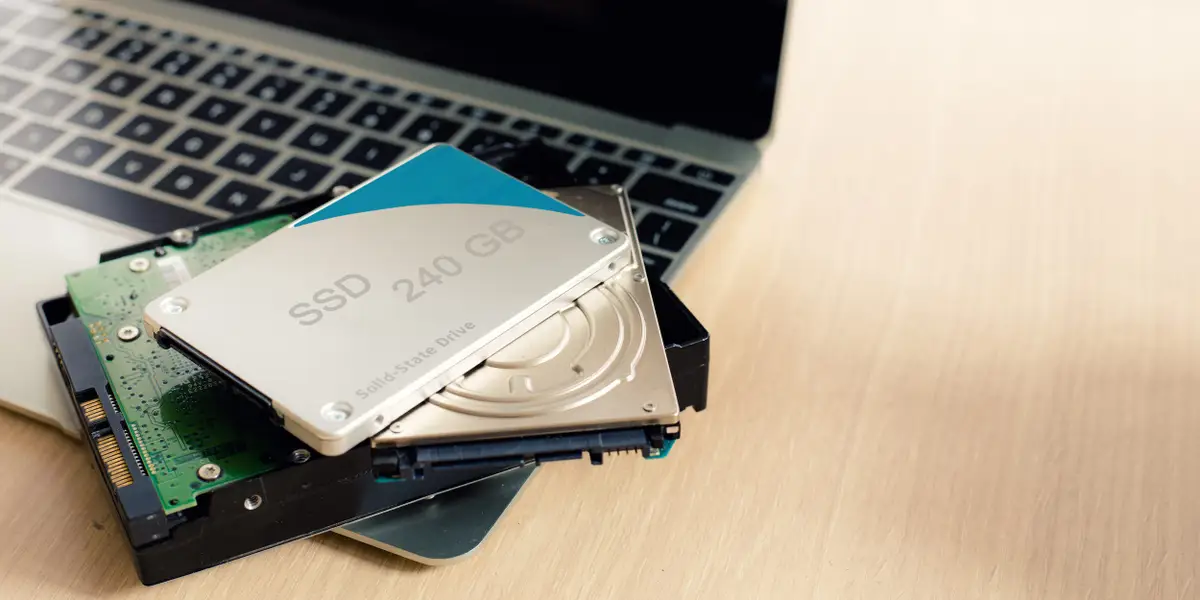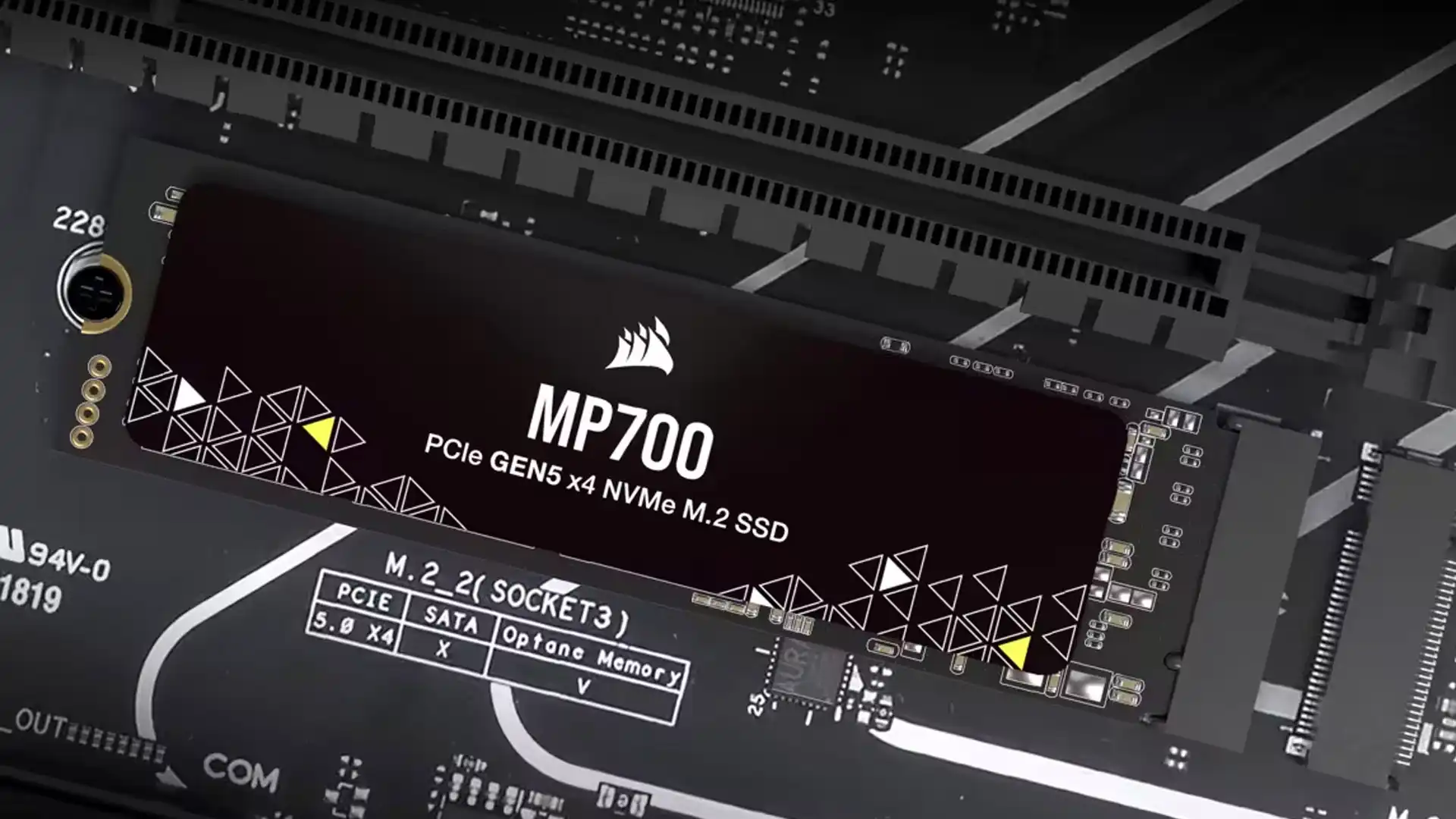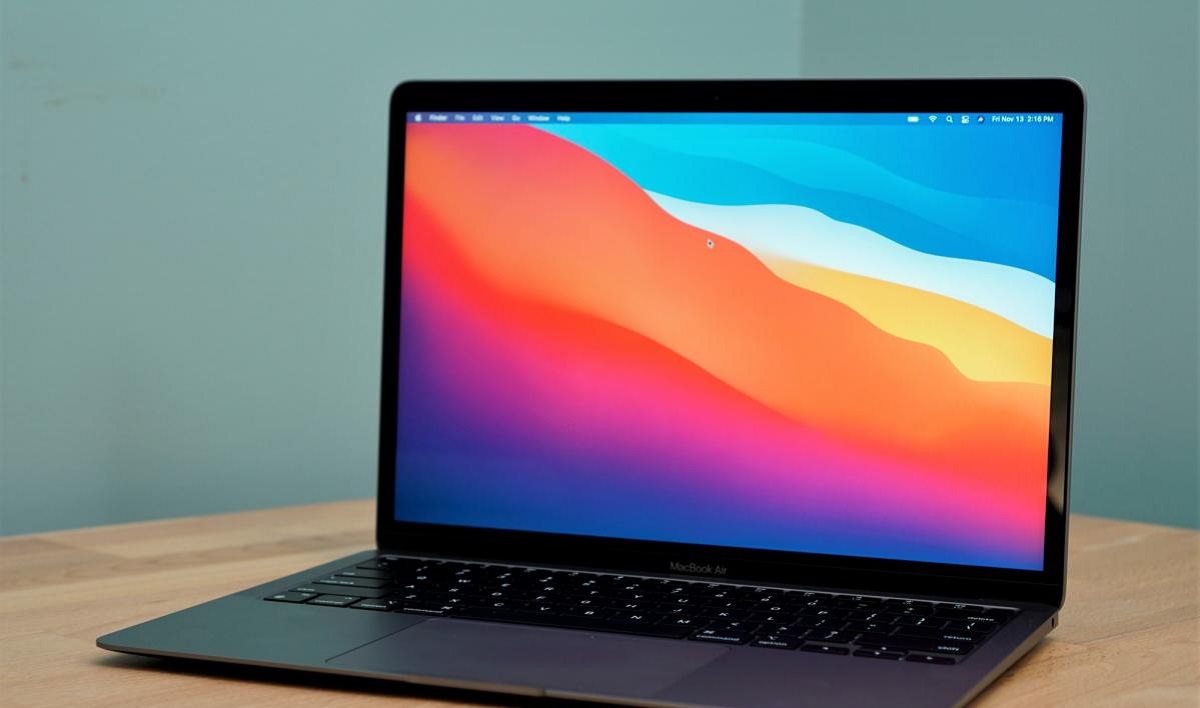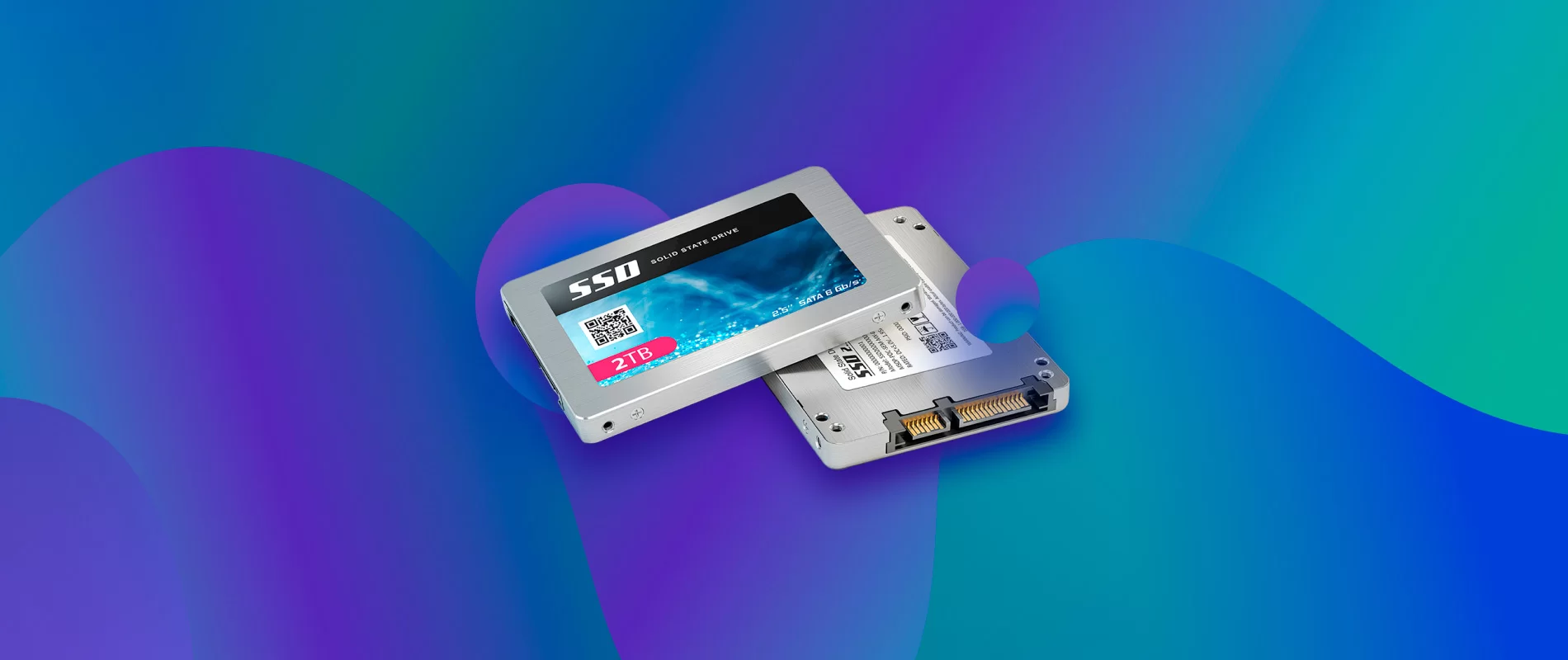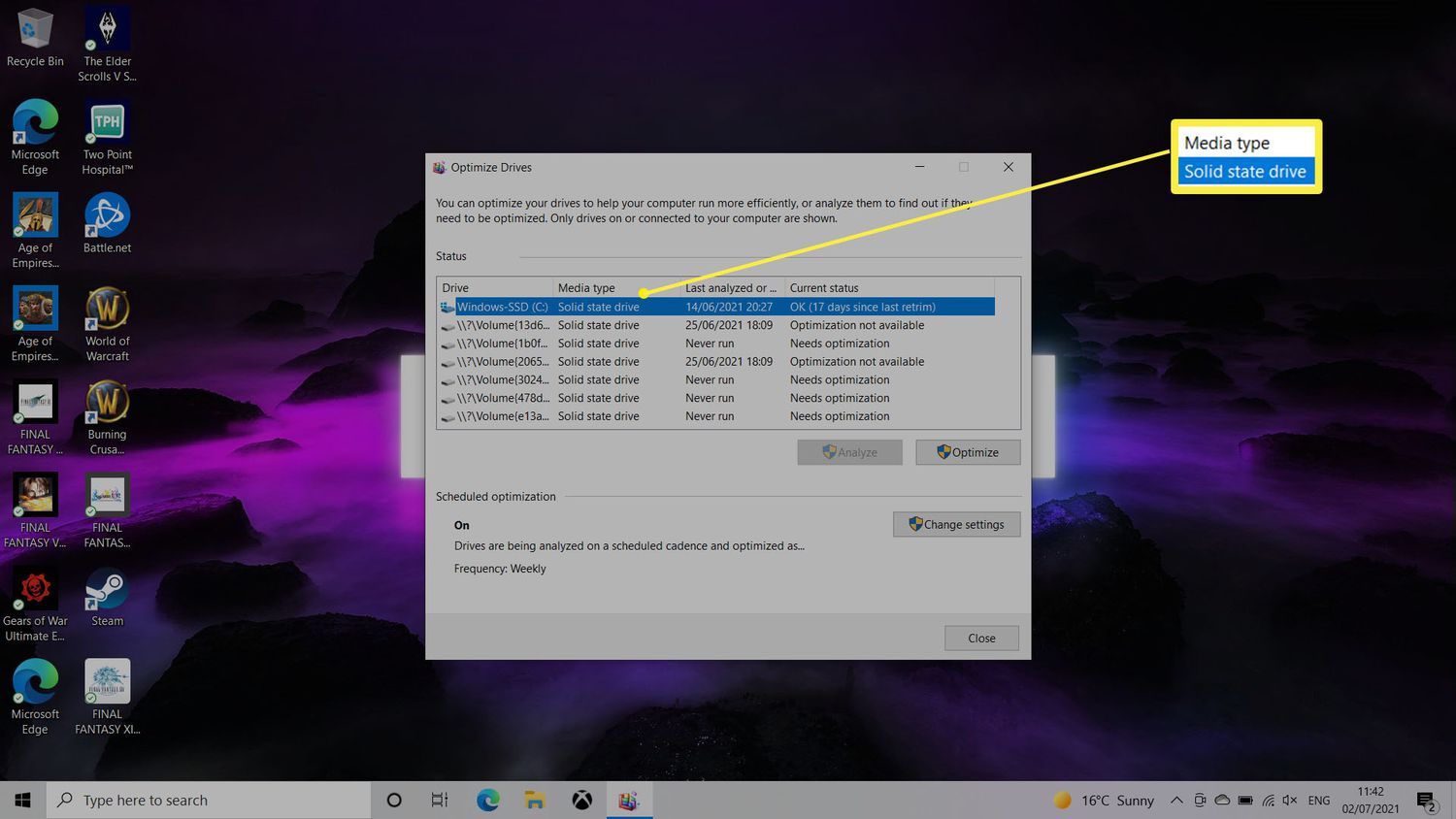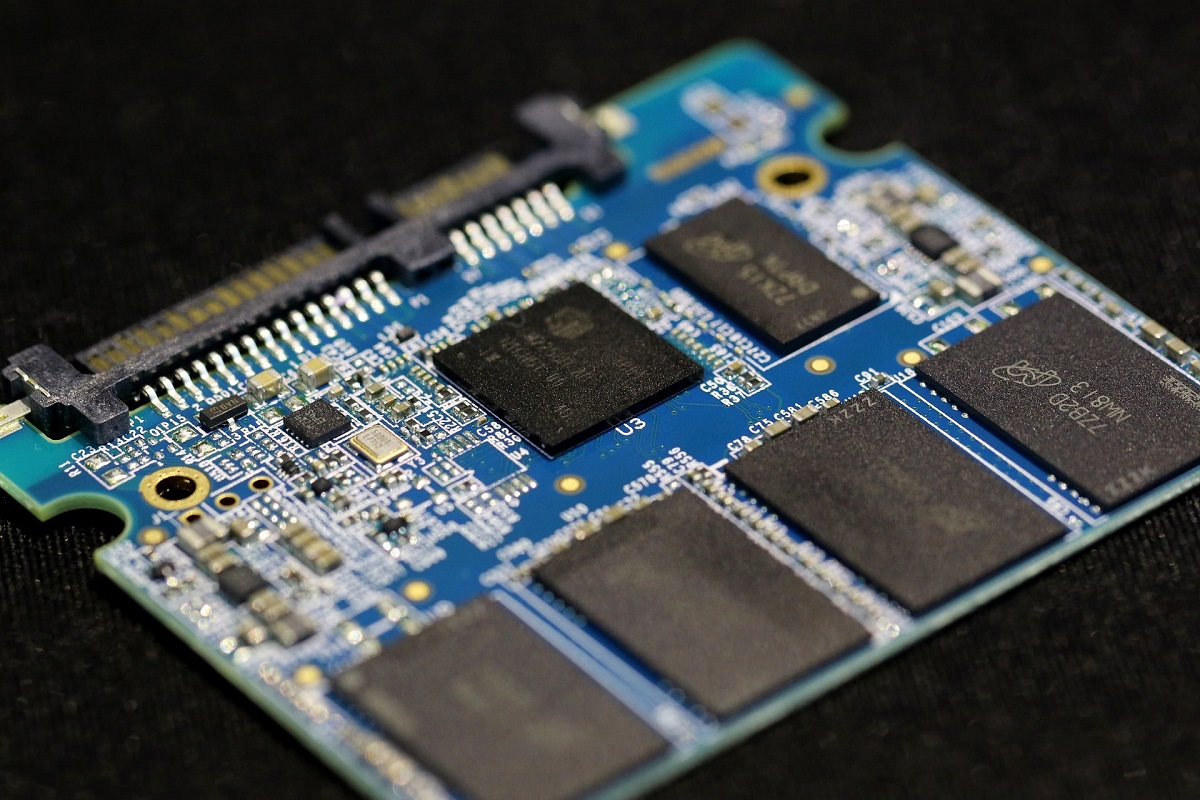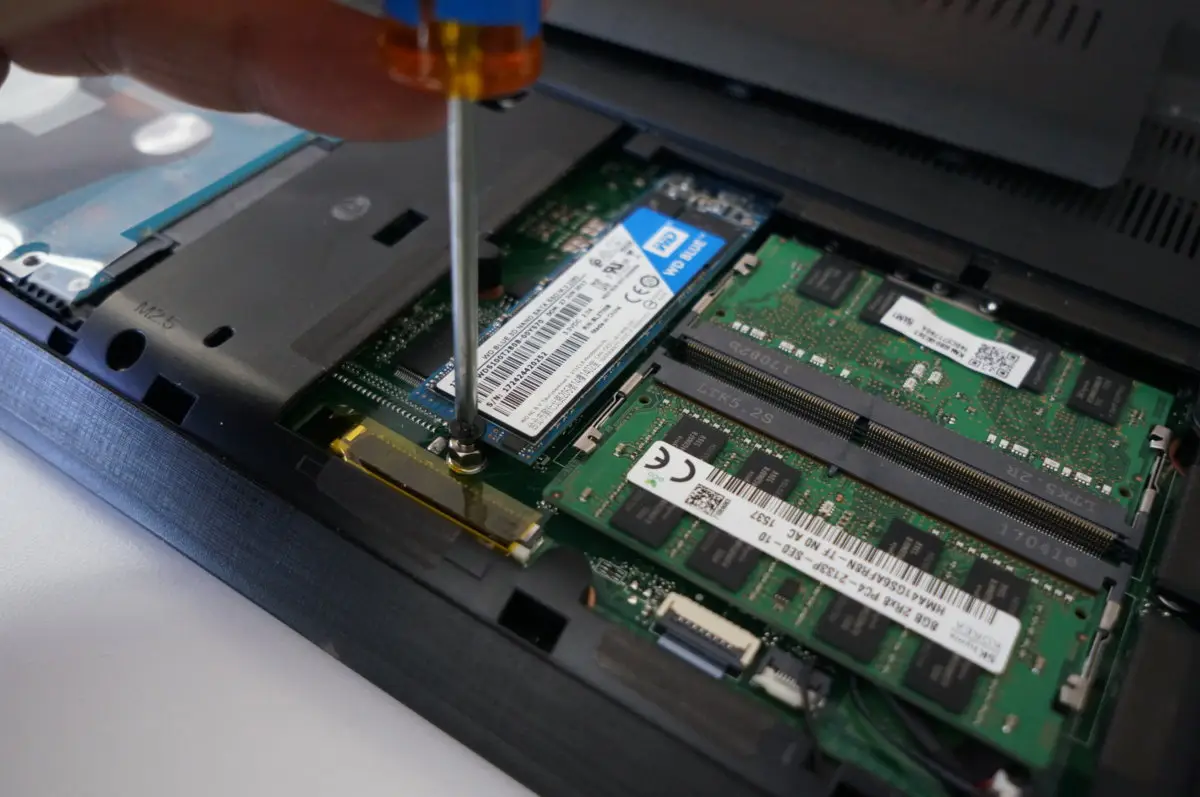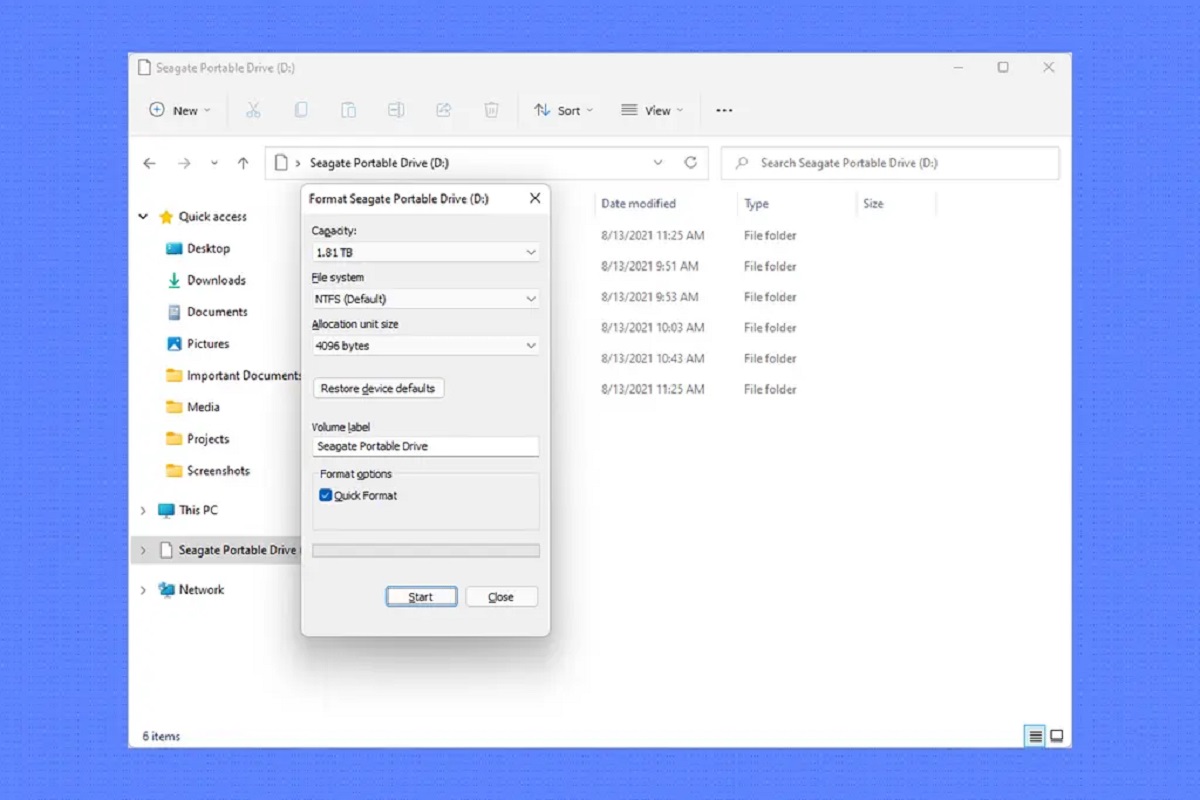Reasons to Check SSD Health
Checking the health of your SSD is essential for maintaining optimal performance and ensuring the longevity of your data storage device. Here are several compelling reasons why you should regularly monitor the health of your SSD:
- Early Detection of Issues: By regularly checking your SSD’s health, you can catch any potential problems or errors before they escalate. This allows you to address issues promptly, reducing the risk of data loss and system crashes.
- Prevent Data Loss: SSDs, like any other electronic device, can experience failures. By monitoring the health of your SSD, you can identify warning signs that indicate an imminent failure. Addressing these signs promptly can help you prevent data loss and avoid the inconvenience of recovering lost files.
- Optimize Performance: Monitoring your SSD’s health allows you to identify any performance degradation over time. By detecting and addressing these issues, you can enhance the overall performance of your SSD, ensuring faster boot times and improved application responsiveness.
- Prolong Lifespan: Regularly checking and maintaining your SSD’s health can help extend its lifespan. By identifying and resolving any potential issues, you can minimize wear and tear on the drive, maximizing its longevity and reducing the need for premature replacement.
- Warranty Validation: Checking the health of your SSD provides valuable information that can be used to validate warranty claims. If you encounter any issues within the warranty period, having documented evidence of your SSD’s health can strengthen your case for a replacement or repair.
- Peace of Mind: Regularly monitoring your SSD’s health provides peace of mind, knowing that your data is secure and your device is functioning optimally. It allows you to take preventive measures to ensure uninterrupted performance and avoid the potential stress and hassle of sudden failures.
Given these compelling reasons, it is evident that checking your SSD’s health should be a regular part of your maintenance routine. By being proactive in monitoring and maintaining your SSD, you can safeguard your data, optimize performance, and maximize the lifespan of your valuable storage device.
Tools for Checking SSD Health
To monitor the health of your SSD, various tools are available that provide comprehensive information about its performance, reliability, and overall condition. Here are a few commonly used tools for checking SSD health:
- CrystalDiskInfo: CrystalDiskInfo is an excellent tool for monitoring the health of your SSD. It provides detailed information about drive temperature, read/write speeds, error rates, and S.M.A.R.T (Self-Monitoring, Analysis and Reporting Technology) status. CrystalDiskInfo is compatible with both Windows and macOS.
- Samsung Magician: If you have a Samsung SSD, the Samsung Magician software is a powerful tool for monitoring and optimizing its performance. It provides essential information about the health of your SSD, firmware updates, and advanced features like TRIM optimization and over-provisioning. Samsung Magician is compatible with Windows operating systems.
- Intel SSD Toolbox: Designed specifically for Intel SSDs, the Intel SSD Toolbox is a comprehensive tool for monitoring and managing your drive. It offers features such as drive diagnostics, firmware updates, and secure erasing. The Intel SSD Toolbox is compatible with Windows operating systems.
- SSD Health Check: SSD Health Check is a lightweight and user-friendly tool that provides an overview of your SSD’s health status. It displays crucial information like estimated lifespan, wear level, and S.M.A.R.T attributes. This tool is compatible with Windows operating systems.
- HD Tune: HD Tune is a popular disk utility program that offers a range of features, including SSD health monitoring. It provides detailed information about drive performance, temperature, and error scan results. HD Tune is compatible with Windows operating systems.
These are just a few examples of the tools available for checking the health of your SSD. When choosing a tool, ensure compatibility with your operating system and SSD brand/model. It’s also important to download these tools from reputable sources to ensure their authenticity and avoid any potential malware or spyware.
With these reliable tools at your disposal, you can regularly assess the health of your SSD, make informed decisions about maintenance, and take proactive measures to ensure the longevity and optimal performance of your valuable storage device.
Checking SSD Health on Windows
Windows provides several built-in tools and features that allow you to check the health of your SSD. Here are some methods you can use to monitor your SSD’s health on a Windows system:
- Task Manager: The Windows Task Manager provides basic information about your SSD’s health. Open the Task Manager by right-clicking on the taskbar and selecting “Task Manager” or by pressing Ctrl+Shift+Esc. Go to the “Performance” tab and click on “Disk” to view the performance of your SSD, including its usage, read/write speeds, and response time.
- Windows Reliability Monitor: The Windows Reliability Monitor gauges the reliability of your system and can provide insights into any issues related to your SSD. You can access it by searching for “Reliability Monitor” in the Windows search bar and opening the tool. Look for any critical events, warnings, or errors that might indicate SSD-related problems.
- Windows S.M.A.R.T. Monitoring: S.M.A.R.T. (Self-Monitoring, Analysis, and Reporting Technology) is a feature embedded in most SSDs that monitors various aspects of drive health. To check your SSD’s S.M.A.R.T. status, you can use third-party software like CrystalDiskInfo or Hard Disk Sentinel, or you can run CMD (Command Prompt) as an administrator and use the “wmic diskdrive get status” command to display the S.M.A.R.T. status of your SSD.
- Manufacturer’s Software: SSD manufacturers often provide dedicated software to monitor and manage their drives. For example, Samsung Magician is a powerful tool specifically designed for Samsung SSDs. Check the manufacturer’s website for any available software that is compatible with your SSD model.
Using these methods, you can gain valuable insights into your SSD’s health status, including performance, errors, and any warning signs of potential failures. Regularly checking the health of your SSD on Windows will help you identify any issues early on, allowing you to take appropriate actions to maintain the drive’s performance and data integrity.
Checking SSD Health on macOS
macOS provides several built-in tools and features that allow you to assess the health of your SSD. Here are some methods you can use to check the health of your SSD on a macOS system:
- Disk Utility: Disk Utility is a built-in tool in macOS that allows you to manage and monitor your SSD. To access Disk Utility, go to “Applications” > “Utilities” > “Disk Utility.” Select your SSD from the list on the left and click on the “First Aid” tab. Click “Run” to initiate a disk check and repair any errors that may be present.
- System Information: System Information provides valuable information about your Mac’s hardware, including your SSD. To open System Information, click on the Apple menu in the top-left corner of your screen, go to “About This Mac,” and then click on “System Report.” Under “Hardware,” select “Storage” to view detailed information about your SSD, including its health status.
- Third-Party Software: There are also third-party tools available for monitoring your SSD’s health on macOS. For example, tools like DriveDx and SMART Utility provide detailed diagnostics and S.M.A.R.T. monitoring for your SSD. These tools can provide additional insights into your SSD’s health and help you identify any potential issues.
By using these methods, you can effectively monitor the health of your SSD on macOS. Regularly checking your SSD’s health ensures that you catch any potential issues early on and take the necessary steps to maintain its performance and reliability.
Checking SSD Health on Linux
Linux provides several tools and commands that can be used to check the health of your SSD. Here are some methods you can use to monitor your SSD’s health on a Linux system:
- Smartmontools: Smartmontools is a collection of command-line utilities that can be used to monitor and analyze the S.M.A.R.T (Self-Monitoring, Analysis, and Reporting Technology) data of your SSD. To use Smartmontools, open a terminal and type “sudo apt-get install smartmontools” to install the package. Once installed, use the “sudo smartctl -a /dev/sdX” command, replacing “sdX” with the appropriate drive identifier, to view detailed information about your SSD’s health and status.
- GNOME Disks: GNOME Disks is a graphical utility for managing and monitoring disk drives in Linux. It provides a user-friendly interface to view detailed information about your SSD, including its health status and any reported issues. To open GNOME Disks, search for “Disks” in your Linux desktop environment’s application menu.
- GSmartControl: GSmartControl is a graphical user interface tool based on Smartmontools. It allows you to view S.M.A.R.T. attributes and perform self-tests on your SSD. You can install GSmartControl by running the command “sudo apt-get install gsmartcontrol” in a terminal. Open GSmartControl, select your SSD from the device list, and click on the “Attributes” and “Perform Tests” tabs to monitor and test your SSD’s health.
- Manufacturer’s Software: Some SSD manufacturers offer Linux-compatible software for monitoring and managing their drives. Check the manufacturer’s website for any available software that is compatible with your SSD model.
With these tools and commands, you can effectively check the health of your SSD on a Linux system. Regularly monitoring your SSD’s health is essential to spot any potential issues, ensure optimal performance, and maintain the reliability of your storage device.
Warning Signs of a Failing SSD
An SSD, like any other electronic device, can experience failures over time. It’s important to be aware of the warning signs of a failing SSD so that you can take immediate action to prevent data loss. Here are some common warning signs to watch out for:
- Slow Performance: If you notice a significant decrease in the overall performance of your SSD, such as slow boot times, sluggish application launches, or delays in file transfers, it could indicate a failing SSD. This can be due to issues with read/write speeds or underlying hardware problems.
- Frequent Freezing or Crashing: If your system frequently freezes or crashes, especially during regular SSD-intensive activities, it could be a sign of a failing SSD. A failing SSD may struggle to read or write data, leading to system instability and crashes.
- Unexpected Errors: If you start encountering frequent error messages related to your SSD, such as “Disk Boot Failure,” “Missing Operating System,” or “File System Not Found,” it could indicate an impending SSD failure. These errors can occur when the drive’s firmware or file system becomes corrupted or when there are read/write errors.
- Data Corruption: If you find that files and data stored on your SSD are becoming corrupted or inaccessible, it is a red flag for possible SSD failure. Data corruption can occur due to underlying issues with the SSD’s memory cells or controller, leading to the loss of data integrity.
- Noise or Clicking Sounds: Unusual noises coming from your SSD, such as clicking or grinding sounds, can be indicative of mechanical damage or component failure. Mechanical failure is rare in SSDs, but when it happens, it can lead to data loss and complete drive failure.
- SMART Warnings: SMART (Self-Monitoring, Analysis, and Reporting Technology) is a feature embedded in most SSDs that monitors various aspects of drive health. If your SSD’s SMART attributes report warning signs, such as high error rates, increasing bad sectors, or a reducing lifespan indicator, it is crucial to take action immediately as these are strong indicators of impending SSD failure.
If you encounter any of these warning signs, it is important to back up your data immediately and seek professional assistance if necessary. Addressing these issues promptly can help you prevent data loss and avoid the inconvenience of a complete SSD failure.
How to Interpret SSD Health Results
When checking the health of your SSD using diagnostic tools or software, you will be presented with various parameters and measurements that indicate its overall condition. Understanding how to interpret these results is essential for assessing the health and potential issues with your SSD. Here are some key aspects to consider:
- S.M.A.R.T. Attributes: S.M.A.R.T. (Self-Monitoring, Analysis, and Reporting Technology) is a feature embedded in most SSDs that monitors various aspects of drive health. Each S.M.A.R.T. attribute represents a different parameter of the SSD’s performance, reliability, and potential issues. When interpreting the results, look for any attributes that report abnormal or out-of-spec values, such as increasing error rates, high temperature readings, or impending failure warnings.
- Wear Leveling Count: Wear leveling is a technique used by SSDs to evenly distribute the writes across its memory cells, extending its lifespan. The wear leveling count indicates how much wear the SSD has encountered over time. A high wear level count may indicate that the SSD has been used extensively and might be closer to its maximum lifespan.
- Bad Sectors: Bad sectors are sections of the SSD’s memory cells that are no longer functioning correctly. When interpreting SSD health results, keep an eye on the number of reported bad sectors. A high count of bad sectors could indicate potential data loss or a failing SSD.
- Erase/Program Cycle Count: SSDs have a limited number of write/erase cycles in their lifespan. The erase/program cycle count indicates how many times data has been written and erased on the SSD. While modern SSDs have high endurance, a very high cycle count might indicate that the drive is nearing its maximum lifespan and may require replacement in the near future.
- Read/Write Speed and Performance: Assessing the read/write speeds and overall performance of your SSD can help gauge its health. If you notice a significant decrease in performance compared to the manufacturer’s specifications or a previous benchmark, it could indicate potential issues or deterioration of the SSD’s performance.
- Temperature: SSDs operate optimally within a specific temperature range. When reviewing the health results, check the reported temperature of your SSD. If it consistently exceeds the recommended temperature threshold, it could indicate inadequate cooling or potential hardware issues.
When interpreting SSD health results, it’s important to refer to the manufacturer’s documentation or consult with professional technicians for specific guidelines and acceptable ranges. Additionally, compare the results with the drive’s initial specifications and consider the drive’s age and usage patterns. Always take proactive measures when you notice any abnormal health indicators to mitigate potential issues and ensure the longevity and reliability of your SSD.
Tips for Maintaining SSD Health
Proper maintenance is crucial to ensure the longevity and optimal performance of your SSD. Here are some valuable tips for maintaining the health of your SSD:
- Enable TRIM: TRIM is a command that helps your SSD maintain optimal performance over time by managing and optimizing the way data is stored. Ensure that TRIM is enabled on your operating system to allow the SSD to effectively manage its memory cells.
- Update Firmware: Manufacturers often release firmware updates to address bugs, improve performance, and enhance compatibility. Regularly check for firmware updates for your SSD model and apply them as recommended by the manufacturer.
- Keep Your System and Drivers Updated: Keeping your operating system and device drivers up to date is important for the overall stability and performance of your system, including your SSD. Regularly check for updates and install them to ensure compatibility and optimal functionality.
- Avoid Overfilling the SSD: SSDs have a limited number of memory cells that can be written to. Avoid overfilling your SSD to leave enough free space for wear leveling algorithms to work efficiently. Aim to keep at least 10-20% of the SSD’s capacity free to ensure optimal performance and longevity.
- Avoid Excessive Write Operations: Though modern SSDs have high endurance, excessive write operations can still decrease their lifespan. Minimize unnecessary write operations, such as excessive downloading, constant virtual memory usage, and temporary file storage, to prolong the life of your SSD.
- Properly Shut Down Your System: When shutting down your system, ensure that it goes through a proper shutdown procedure rather than a sudden power-off. This allows the SSD to complete any pending write operations and prevent potential data corruption.
- Be Cautious with Power Surges: Power surges and fluctuations can potentially damage your SSD. Use a reliable surge protector or uninterruptible power supply (UPS) to protect your system from abrupt power changes and minimize the risk of SSD damage.
- Regularly Back Up Your Data: Despite taking precautions, SSD failures can still occur. It’s essential to regularly back up your data to a separate storage device or cloud service to ensure that you can recover your files in the event of an SSD failure.
By following these tips, you can maintain the health and performance of your SSD, minimize the risk of data loss, and maximize the lifespan of your valuable storage device. With proper care and maintenance, your SSD can continue to serve you reliably for years to come.
Conclusion
Regularly checking the health of your SSD is essential for maintaining optimal performance, preventing data loss, and prolonging the lifespan of your storage device. By utilizing various tools and methods available for different operating systems, such as Windows, macOS, and Linux, you can monitor the health status of your SSD, identify warning signs of potential issues, and take appropriate actions to mitigate them.
During the monitoring process, it’s important to interpret the results accurately. Understanding key parameters such as S.M.A.R.T. attributes, wear leveling count, bad sectors, and performance indicators can help you assess the overall condition of your SSD and make informed decisions about maintenance and potential replacements.
To ensure the longevity and optimal performance of your SSD, implement proper maintenance practices. Enabling TRIM, updating firmware, keeping your system and device drivers up to date, avoiding overfilling the SSD, minimizing excessive write operations, properly shutting down your system, protecting against power surges, and regularly backing up your data are crucial steps for maintaining SSD health.
By following these guidelines, you can identify and address potential issues early, mitigate the risk of data loss, optimize your SSD’s performance, and extend its lifespan. Proper care and maintenance of your SSD will provide you with the peace of mind that your data is secure and your storage device is functioning at its best.







